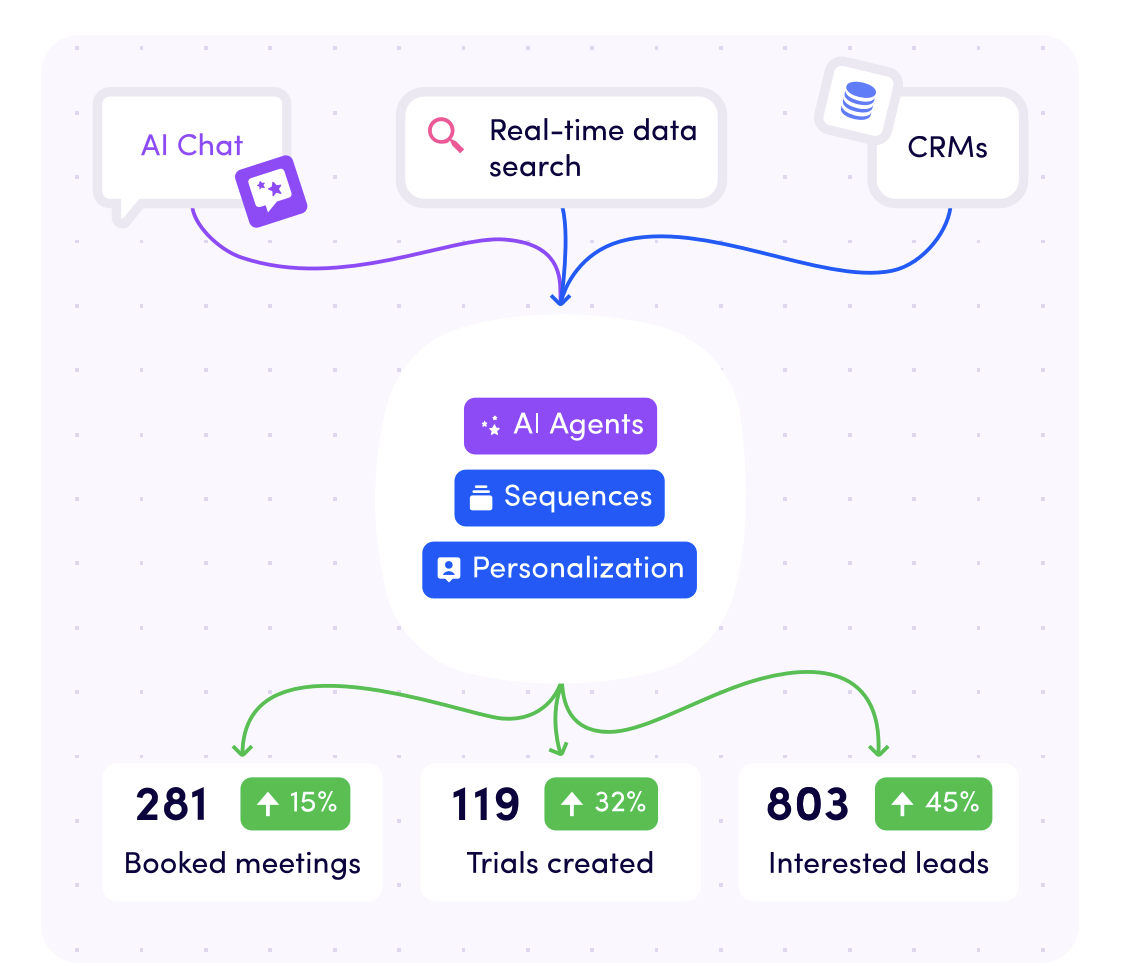Let's Discuss Growth vs Profitability: Which One Wins?

In the fast-paced business world, the struggle between growth and profitability is a constant debate. Business leaders, executives, and investors often find themselves trying to balance these two crucial aspects to ensure long-term success.
But which one should come first?
Is it possible for a business to find a sweet spot, or does one always have to take the lead?
Keep reading to find the answer...
Quick overview:
1. The business dilemma: growth vs. profitability
3. Understanding profitability
4. Balancing growth and profitability: steps to refine your vision
5. What to do in uncertain times?
5. So ... growth or profitability?
The business dilemma: growth vs. profitability
"Should I go for growth or profitability?"
Well, the answer to this question is a bit more tricky than it seems.
There are many factors to consider when going for one approach or the other.
That's why we will do our best to help you choose by comparing both.
But one thing is certain: If you dream of your business going public or being bought for a fortune, go after growth.
If what matters most to you is keeping your employees' jobs secure: focus on keeping the business profitable first. Then, you think of growth as something extra.
But... there is a way to grow your business AND be profitable.
This is just a matter of finding the right approach.
When you focus on necessities and make smart investments, achieving growth and profitability is attainable.
Understanding growth
Business growth is critical for long-term success, involving expansion, increasing market share, and boosting profitability.
Growth can be measured through metrics such as sales, staff numbers, market share, and turnover.
While initial profitability is crucial for a start-up, focusing on growth ensures sustained success and keeps investors interested.
Understanding a company's current state is vital for a successful growth strategy.
If there are significant weaknesses in performance, sales, or marketability, premature growth rate attempts can be disastrous.
Thus, consolidating existing markets is a necessary first step.
Venture-backed companies constantly face pressure to grow quickly, investing heavily in sales and marketing to expand and build a large customer base.
This can help dominate a market and gain a competitive edge.
However, rapid growth comes with risks.
Overextending can endanger the business, and investors will scrutinise financial health.
The expense of growth must be carefully considered, as without sustainable financials, investment opportunities and financial support may be compromised.
Examples of growth companies are:
Uber
Uber exemplifies a growth company due to its rapid market expansion, substantial funding, and prioritisation of market share over immediate profitability.
Key factors include:
- Rapid Market Expansion: Uber quickly scaled globally, capturing significant market share in the ride-hailing industry.
- Significant Funding: Uber attracted large venture capital investments, allowing for aggressive growth and subsidies for drivers and riders.
- Diversification: Uber expanded into food delivery (Uber Eats), freight, and electric bike and scooter rentals, creating multiple revenue streams.
- Focus on Customer Acquisition: Uber prioritised acquiring a large user base with promotions and incentives, aiming for long-term loyalty.
- Operating at a Loss: Uber reinvested revenue into growth initiatives rather than seeking immediate profits, aiming to establish a dominant market position.
These strategies highlight Uber's emphasis on rapid growth and market dominance.
Amazon
Amazon is a prime example of a growth company due to its relentless focus on expansion and market dominance.
Key reasons include:
- Diversification and Ecosystem: Amazon continually expands its product and service offerings, from e-commerce and cloud computing (AWS) to streaming services and AI technology. This creates a comprehensive ecosystem with services like Prime, Kindle, and Alexa to encourage customer loyalty.
- Customer Focus: Amazon prioritises customer acquisition and retention through low prices, fast delivery, and excellent service.
- Significant Investment: Amazon reinvests profits into new technologies, infrastructure, and acquisitions to fuel growth.
- Global Expansion: Amazon rapidly scales its operations globally, capturing vast market shares in various regions and industries.
- Innovative Strategies: Amazon pioneers new business models and technologies, maintaining a competitive edge and creating new revenue streams.
These strategies underscore Amazon's commitment to long-term growth and market leadership.
Airbnb
Airbnb's success stemmed from its distinctive approach to growth.
Recognising the necessity of rapid scalability alongside profitability, they prioritised user acquisition, product evolution, and delivering tailored experiences.
Key factors include:
- Disruptive Business Model: Airbnb revolutionised the hospitality industry by offering unique accommodation options and empowering hosts to monetise their properties.
- Global Expansion: Airbnb scaled its operations globally, quickly establishing a presence in numerous countries and cities.
- Technological Innovation: Airbnb leverages technology to streamline booking processes, enhance user experiences, and facilitate communication between hosts and guests.
- Diversification: Airbnb expanded its services beyond accommodation, offering experiences and adventures, further broadening its market reach.
- Strategic Partnerships: Airbnb forms partnerships with travel agencies, businesses, and local governments to expand its reach and improve services.
These factors highlight Airbnb's commitment to continuous growth and innovation in the travel and hospitality sector.
Understanding profitability
A company's net profit is the revenue left after deducting all production and sales expenses.
This profit can be distributed to owners, and shareholders or reinvested in the business.
Profit is crucial, especially for companies without initial investors, as it often serves as their primary capital.
Without sufficient capital, business failure is inevitable.
While temporary financing can support a company, it ultimately becomes a liability.
An income statement, detailing profitability, costs, and expenses, is essential for assessing financial health and calculating profitability ratios.
Entrepreneurs aim for profitability as the main reason for starting a business is to make money.
However, true profitability can sometimes be sacrificed for sales growth.
Focusing on profitability enhances financial health without heavy reliance on external support.
This allows a company to sustain operations and pay expenses primarily through its income.
Many entrepreneurs overlook the chaos of a "grow at all costs" approach.
This can lead to unnecessary hiring, poor vetting, and a decline in quality, risking brand reputation and customer loyalty.
Mismanaged finances can cause severe cash flow problems, hindering the ability to pay vendors, employees, and other expenses.
But, focusing on profitability avoids such impulsive decisions.
By developing solid business solutions and refining offerings, a company builds a stronger foundation, prioritising financial stability over rapid expansion.
Examples of profitable companies are:
Apple
Apple stands out as a profitable company in the technology industry.
Its success is due to several key factors:
- Innovative Products: Apple consistently introduces high-margin, innovative products. Examples are the iPhone, iPad, and Mac, driving strong sales and profitability.
- Brand Loyalty: Apple has cultivated a loyal customer base that eagerly purchases its products. This was often at premium prices, due to the perceived quality, design, and status associated with the brand.
- Ecosystem Integration: Apple's ecosystem, including hardware, software, and services like iCloud, Apple Music, and the App Store, generates recurring revenue and enhances customer retention.
- Strong Financial Performance: Apple's robust financial performance, with consistently high revenue and profit margins, demonstrates its ability to generate substantial profit and make it harder for competitors to even get close to them.
- Global Market Presence: Apple's products are sold worldwide, allowing the company to capture significant market share and maintain its position as a leading technology brand.
Microsoft
Microsoft is recognised as a profitable company in the technology sector, driven by its commitment to innovation and diverse product offerings.
With a focus on delivering AI solutions across various industries, Microsoft continues to thrive due to the following reasons:
-
Diverse Product Portfolio: Microsoft offers a wide range of products and services. This includes Windows, Office Suite, Azure, and Xbox, leading to multiple revenue streams.
-
Market Dominance: Microsoft holds dominant positions in operating systems, productivity software, and other key markets, ensuring high-profit margins and significant revenue.
-
Enterprise Focus: Microsoft serves businesses with essential tools and services, generating consistent revenue from corporate customers.
-
Cloud Computing Growth: Microsoft's Azure platform has seen substantial growth. They drove revenue and profitability as more businesses adopted cloud computing solutions.
-
Strategic Investments: Microsoft's strategic acquisitions and investments in various technology sectors expand its offerings and enhance its competitive edge, contributing to profitability.
This is why:
-
Iterative Product Development: A cornerstone of Google's strategy is its iterative approach to product development. The company launches prototypes or beta versions and iterates on them, continually improving with each iteration.
-
Search Engine Excellence: Google's initial focus was on creating a powerful search engine powered by algorithms that provide accurate results for every search query, establishing its dominance in the search market.
-
Monetisation through AdWords: Google monetised its search engine with Google AdWords. It enables revenue generation through pay-per-click advertising. This leverages its vast user base and targeted advertising capabilities.
-
Diverse Product Portfolio: Beyond search, Google has successfully introduced a wide range of products and services. This includes YouTube, Google Maps, Google Apps, and Google Cloud, diversifying its revenue streams and expanding its market reach.
Balancing growth and profitability: steps to refine your vision
In the dynamic landscape of entrepreneurship, determining the right metrics to guide your business's trajectory is essential.
Striking the balance between growth and profitability requires careful consideration and a strategic business plan.
Here are four steps to refine your metrics and navigate the growth vs. profitability dilemma effectively:
-
Define Your Ambitions: Consider your long-term goals for the business. If acquisition or going public is on the horizon, prioritising high growth can attract investors and buyers. Contrarily, if you aim to maintain ownership and longevity, focus on profitability.
-
Evaluate Your Business Stage: The stage of your business influences the emphasis on growth versus profitability. Younger ventures often prioritise growth to establish market presence and revenue streams. Yet, mature companies may focus more on maintaining profitability and leveraging existing customer relationships and services.
-
Assess Your Industry Position: Understand where your business stands within the industry. Understand where your business stands within the industry. A tech startup may pursue rapid growth through user acquisition. Meanwhile, a manufacturer might balance growth with profitability, expanding customer base and inventory in partners.
-
Engage Your Stakeholders: Polling stakeholders, whether investors or internal team members, can provide valuable insights into the business direction. Independent owners have more autonomy but should align strategies with stakeholders' expectations, particularly when investor interests are involved.

What to do in uncertain times?
In times of disruptive changes, such as the pandemic or the rise of Artificial Intelligence (AI), businesses face unprecedented challenges that test their resilience and adaptability.
These uncertainties highlight the importance of being "antifragile".
Anti ... what?
Antifragility is a concept introduced by Nassim Nicholas Taleb in his book "Antifragile: Things That Gain from Disorder".
It refers to systems or entities that thrive and improve when exposed to uncertainty and stress.
Unlike fragile entities that break under pressure or robust ones that withstand it, antifragile entities embrace chaos and uncertainty.
So, they use them as growth opportunities and improvement.
Some companies failed to embrace antifragility and suffered the consequences.
Examples are:
- Blockbuster: Failed to adapt to online streaming, leading to its downfall.
- Kodak: Missed the digital photography revolution, resulting in bankruptcy.
- Blackberry: Lost market share due to lack of innovation in smartphones.
- Yahoo: Struggled to keep pace with evolving technology and consumer preferences, leading to its acquisition by Verizon.
These cautionary tales serve as reminders of the importance of embracing antifragility in today's rapidly evolving business landscape.
If you are interested in learning more about leading an antifragile organisation and becoming a true digital leader, check out this online course.
So ... growth or profitability?
To decide between focusing on making a profit or aiming for growth, start by understanding your business goals, both short and long-term.
Seek advice from experienced financial experts to help you figure out the best approach.
Here are some questions to consider:
- What kind of market does my business operate in, and how tough is the competition?
- Do I need to grab a big slice of the market quickly to succeed?
- Have I got enough money to invest in growth, or should I focus on making enough to cover costs?
- Am I relying on investors, loans, or both to keep the business going?
- Do I plan to get funding from venture capitalists or private equity firms?
- Is my business all about selling to consumers (B2C) or other businesses (B2B)?
- Do I think about selling the company down the line, and if so, when?
These questions will help you work out which path is right for your business.
Remember, things can change over time.
So, you might need to tweak your approach as your needs, the market, and your goals evolve.
The bottom line
In the ongoing debate over growth versus profitability, navigating modern business is tough.
The digital age, market uncertainties, and changing consumer demands make it harder.
On one hand, companies often focus on growing their market share rather than making quick profits.
They believe in "grow now, profit later."
On the other hand, when the economy is shaky, investors want profits fast.
This puts pressure on companies to show they're financially stable soon.
But one thing's clear: profit and growth are vital for success.
Profit keeps a company afloat, while growth ensures long-term success.
In the end, companies must make smart choices.
Trying to do both at once might not work, but aligning strategies with goals can lead to business success.
So, why not focus on profitable growth?
FAQ
1. What's the difference between growth and profitability?
Growth is about increasing a company's revenue and market share, often through organic growth or new customers. Profitability is about making more money than you spend, ensuring positive cash flow and profits.
Successful companies balance both to stay healthy. Too much focus on growth can lead to high costs, while too much focus on profits can slow growth. Financial experts look at both to gauge a company's health.
2. How do public markets affect a company's growth and profitability?
Public markets can push companies, especially tech companies, to show strong growth to keep stock prices high. But these companies also need to show they can make money and manage cash well. Public companies need to keep a healthy balance sheet and access to capital to fund growth. If they fail, investor confidence drops, and funding can dry up.
3. Why is product-market fit important for startups?
Product-market fit means a startup's product meets market needs, driving user growth and competitive advantage. Startups with good product-market fit can grow faster and cheaper, improving their finances. This stage attracts investment and accelerates growth. Without it, startups face high costs and low returns, risking their future.
4. How can a software company balance growth and profitability?
Software companies balance growth and profitability by investing in scalable tech and efficient sales processes to cut costs and boost margins. Strong network effects and good unit economics help them grow profitably. Access to capital is crucial for investing in growth without hurting cash flow. Maintaining positive cash flow and leveraging advantages helps them compete well.
5. What do financial professionals do to manage growth and profitability?
Financial professionals help balance growth and profitability by analysing costs, capital needs, and profit margins. They ensure companies invest wisely and keep costs in check. Their insights help companies grow sustainably and maintain current profits, guiding them through financial decisions.
Categories
- Business & Innovation (83)
- Growth & Marketing (72)
- Artificial Intelligence (53)
- Data & Analytics (16)
- Case studies (10)
- Project Management (10)
Related articles
Latest articles
AI in Finance: Why You Need It Now
Imagine a world where loans are approved in seconds. Sounds...
ChatGPT Search Unveiled: Should You Make The Switch Now?
Picture this: You’re no longer just “searching” the web—you’re...
Shadow AI Explained: How to Harness Hidden AI Without the Risks
Picture this: your team is under pressure to deliver results—fast....
The 33 best AI tools for commercial teams
The tools are split into 2 categories The best AI tools for your...





















